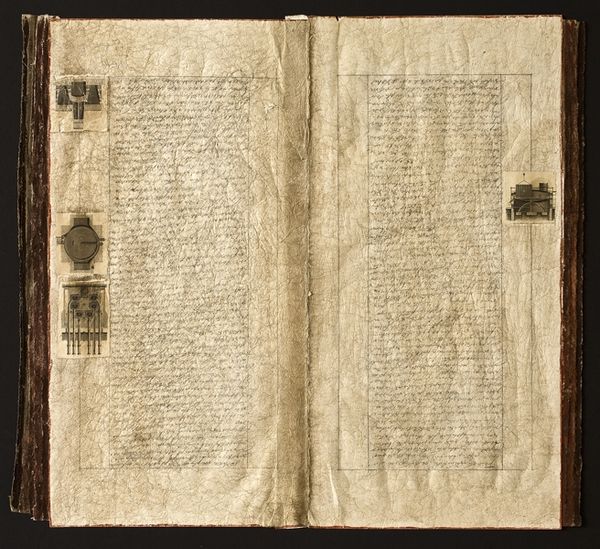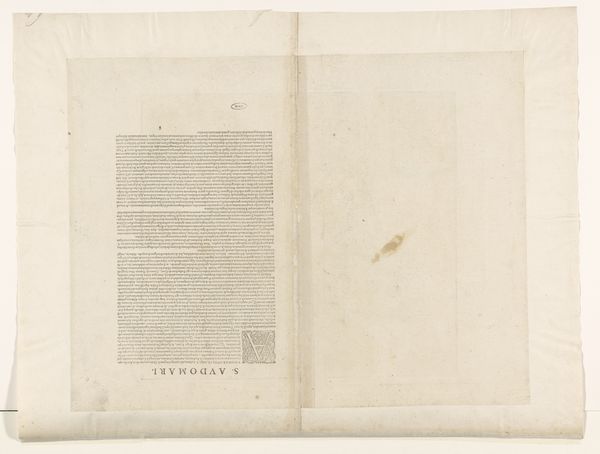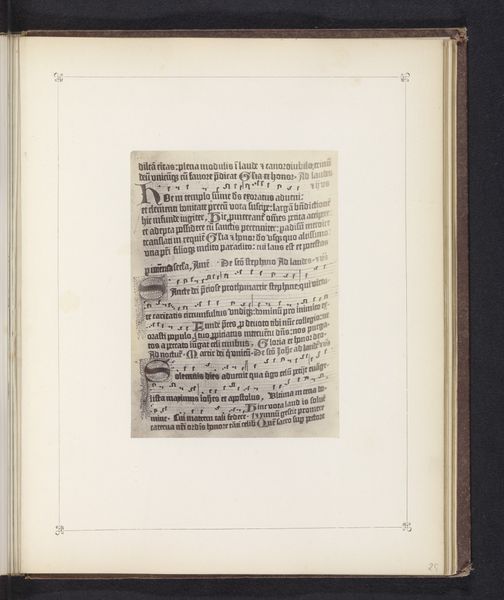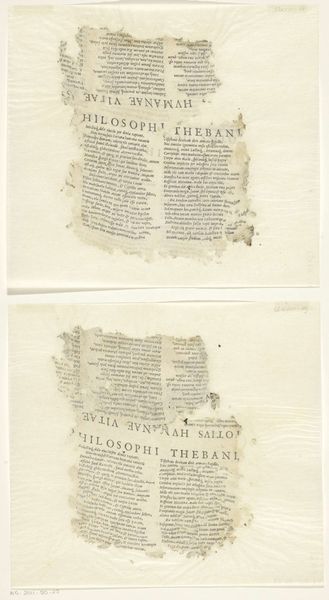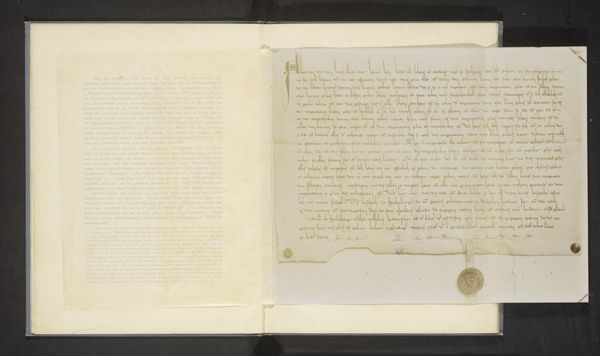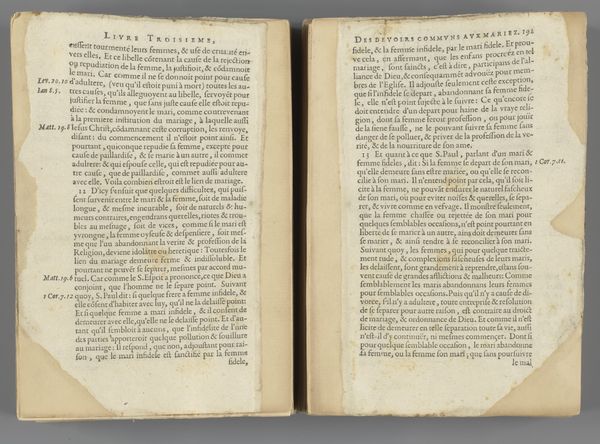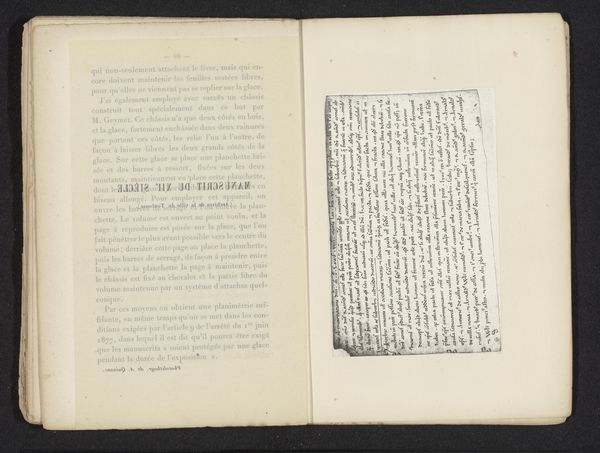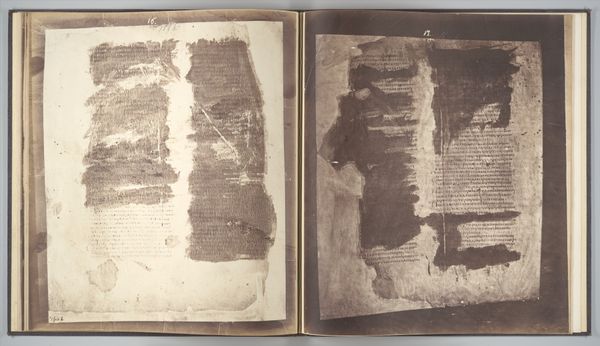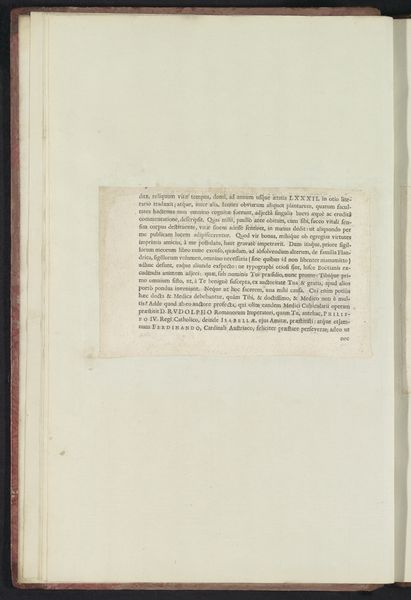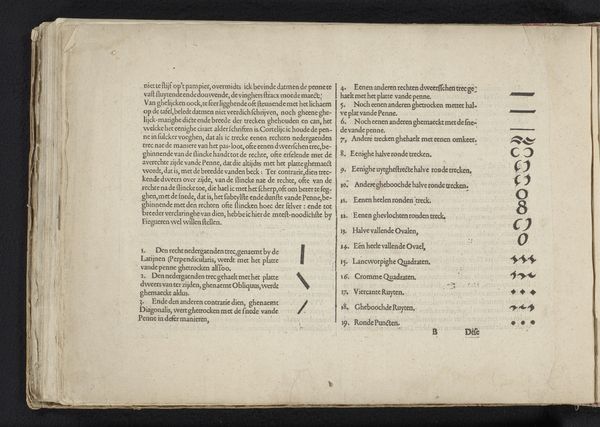
drawing, paper, ink
#
drawing
#
medieval
#
paper
#
ink
#
coloured pencil
#
calligraphy
Dimensions: height 218 mm, width 274 mm
Copyright: Rijks Museum: Open Domain
Curator: Here we have "Pagina uit een manuscript" by Jan Goedeljee, likely made sometime after 1879. It's crafted using ink, drawing, and what looks like colored pencil on paper, in a style that evokes medieval manuscripts. Editor: My initial reaction is that it has an antiquated and inaccessible quality. The dense text, rendered in sepia tones, gives it a feeling of aged wisdom—or perhaps of being deliberately obscure. The paper itself seems quite distressed, almost like a relic. Curator: Goedeljee was known for his interest in historical styles. This piece really showcases the Victorian fascination with the medieval period, doesn't it? He meticulously recreates the appearance of an illuminated manuscript page. But what I find fascinating is the level of detail given that these medieval art movements had lost some appeal. Editor: Absolutely, it speaks to the labor invested in the piece—the hours spent painstakingly copying and creating. You can almost feel Goedeljee's hand at work, mimicking the precise strokes and the textures of the original materials. What purpose would such work serve during such period of modernity? Was this part of the Art and Crafts movement perhaps, seeking return of human craft in place of machines? Curator: Exactly, and there's a layer of interpretation happening. He’s not just replicating but also reinterpreting, perhaps adding his own flourishes or correcting what he perceived as flaws. I think this touches on how the Victorians viewed the past—a mixture of reverence and a desire to improve upon it. Editor: Looking closely, the choice of materials also influences the artwork's presence. The use of drawing over a painting evokes the slow work that can produce the fine, minute line and the handmade appeal you have rightly pointed out. It all contributes to its artifactual value, blurring the line between original historical document and a modern artistic fabrication. Curator: It prompts us to think about the politics of artistic appropriation. What does it mean to take a style from another era and adapt it for a contemporary audience? And who gets to decide what constitutes authentic representation? It gives audiences an appreciation of past tradition but is also prone to inauthenticity. Editor: Well, I'd say this piece exemplifies the complex interplay between material and idea—the skill involved to capture essence of previous traditions in material form for modernity to engage with is what captures me. Curator: Indeed, it certainly opens the door for a great amount of historical contextualization that we have embarked on just now.
Comments
No comments
Be the first to comment and join the conversation on the ultimate creative platform.


